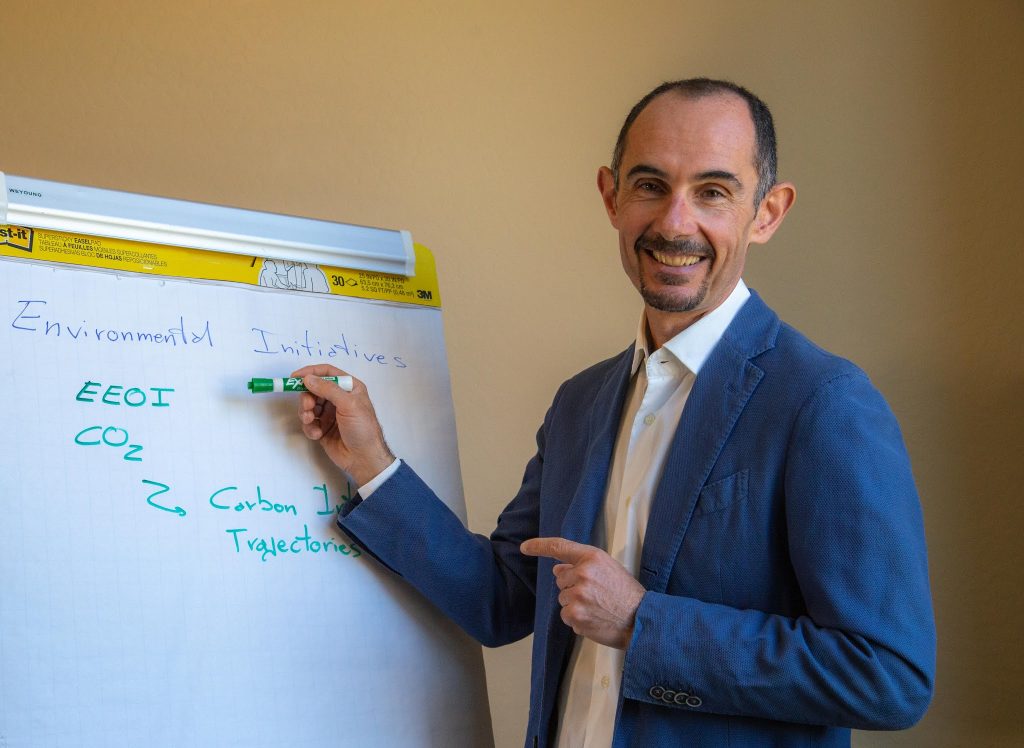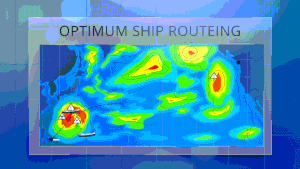News & Press Release
New Carbon Intensity Monitoring (CIM) service aims to set the standard for emissions reporting and compliance
Shipping >International shipping carries around 90% of world trade by volume, but as a major source of greenhouse gas (GHG) emissions it remains a major sustainability issue for global supply chains. Emissions from shipping rose by nearly 10% between 2012 and 2018, and this will grow in the absence of far-sighted mitigation strategies. New solutions must be swiftly adopted if shipping is to meet the International Maritime Organization (IMO)’s target to reduce emissions by 50% by 2050.
“Our vision is to help create a sustainable future for shipping founded on safety and environmental consciousness. Our new Carbon Intensity Monitoring (CIM) service is an integral part of that journey and promises to make a huge difference in reliable CO2 reporting and regulatory compliance,” says Weathernews Americas CEO Antonio Brizzo. |  |
Watch video
Focus on complete berth-to-berth voyage
Climate regulation compliance and the ability to precisely monitor individual vessel and fleet emissions is a big challenge for shipping companies. “Aligning shipping and chartering activities to be environmentally responsible is the ultimate goal of CIM, through measuring and reporting CO2 emissions from berth to berth, including the voyage legs under spot chartering,” says Brizzo.
Data quality underpins everything
Data cleansing and verification are especially important in shipping where data from multiple sources have to blend in a unique end-to-end platform. Relying on the best possible dataset to translate analytics into actionable insight is paramount. CIM collects all required data via interactive reporting tools and provides multi-layered data verification for accurate calculation of a vessel’s Energy Efficiency Operational Indicator (EEOI) and CO2.

Better decisions, time savings, and feedback
Improved data quality also means better decision making. Imagine if CO2, EEOI, and other environmental parameters were calculated using inconsistent data – it would require a lot of extra effort to ensure all report data was reliable. CIM's automatic process to obtain a clean dataset reduces the burden on operators. "We estimate this can save crews around 30 minutes per day, equivalent to 25 man-hours across a fleet of 50 vessels," says Brizzo.
CIM also provides easy and intuitive real-time EEOI visualization providing instant feedback on CO2 reduction efforts. "This will set the standard for best practice in monitoring emissions and reporting requirements," says Brizzo.
Optimized fuel consumption

CIM also guarantees seamless integration with Weathernews' proprietary Optimum Ship Routeing (OSR) service to optimize voyage fuel consumption – while also improving EEOI if the charter market is low.
Blending CIM with OSR helps promote both environmental and business sustainability.
Secure data storage with blockchain
CIM stores factual emissions data in a secure and trusted environment. Built using a proprietary distributed ledger database, the back end will entirely be based on blockchain to ensure traceability and transparency. This will allow the market to freely trace the exact amount and location of emissions from a single ship, a particular trade route, or the carbon intensity efficiency of a particular ship by means of its EEOI. This not only enhances supply chain visibility but also enables stakeholders to satisfy increasingly stringent requirements for environmental, social, and governance (ESG) reporting – increasingly a key factor in boardrooms and for value-chain parties such as investors, banks, and charterers. "We aim to become the official scorekeeper of choice and a recognized third-party entity to guarantee transparency and unbiased reporting," says Brizzo.
Sea Cargo Charter compliance

CIM is fully compliant with the technical guidance outlined in the Sea Cargo Charter, a global framework for aligning chartering activities with responsible environmental behavior to promote the decarbonization of international shipping.
Looking ahead: carbon trading platform
It also sets the stage to scale fast towards Weathernews' goal to launch a cap-and-trade digital marketplace for carbon credit offsetting. "Charterers and owners want to achieve environmental targets but also ensure the investments they make will generate a financial return," says Brizzo. Called Marine Carbon Blocking (MCB), this proprietary trading system also leverages blockchain and will allow users to convert CO2 reduction efforts in environmental assets for exchange. Read more
Collaboration is vital
It is intended that the platform will initially be used by companies with a common interest in reducing CO2 emissions and a willingness to collaborate in a closed group. The Sea Cargo Charter consortium is a good example in shipping. "We want to enable users to offset within that closed enclave supported by the best possible technical back end," says Brizzo.
The MCB will not be limited to shipping. The ultimate objective is to make it available to the many carbon offsetting schemes in the market, including the EU's Emissions Trading System. "MCB participants should be free to choose the scheme they prefer, so interoperability among the different platforms will be key," says Brizzo.
"We are working with our partners to go live with this exciting initiative during 2021. Companies globally are increasingly choosing to work with purpose-led partners that share their values, and we invite others to reach out to us if they would like to get involved," says Brizzo. "Let's make this happen together, beginning with CIM," he adds.
For more information read more here
or contact directly: cim_inquiry@wni.com